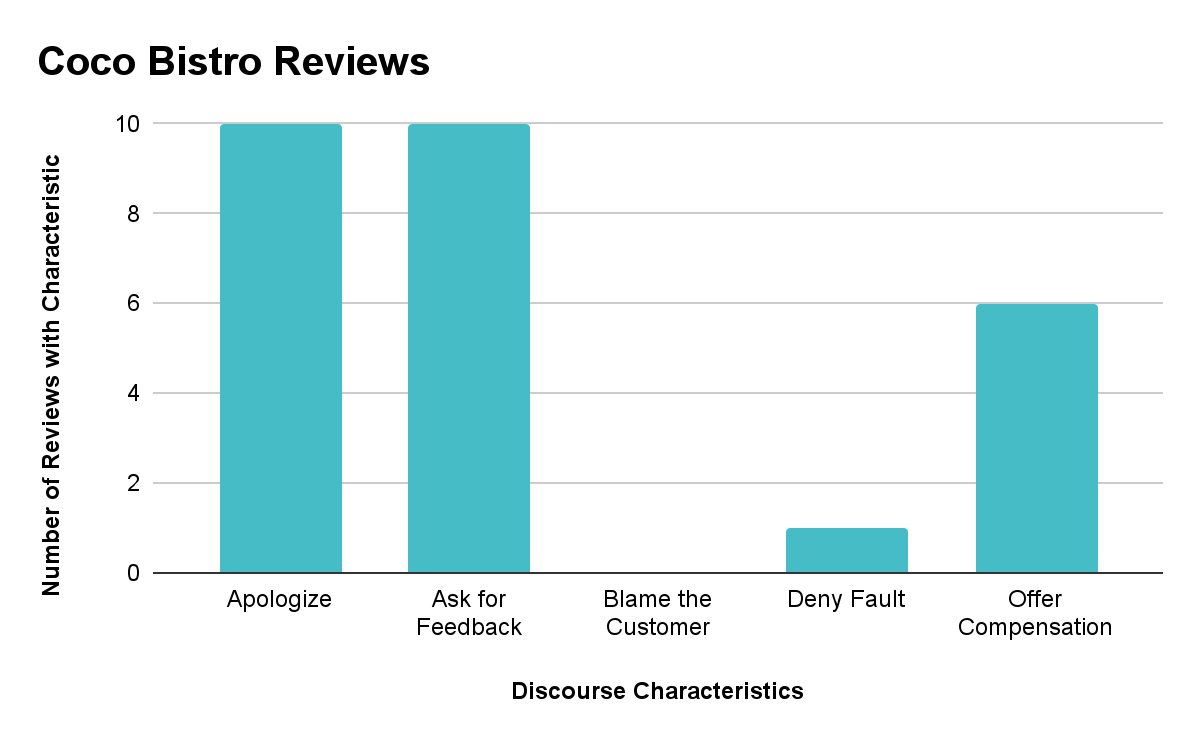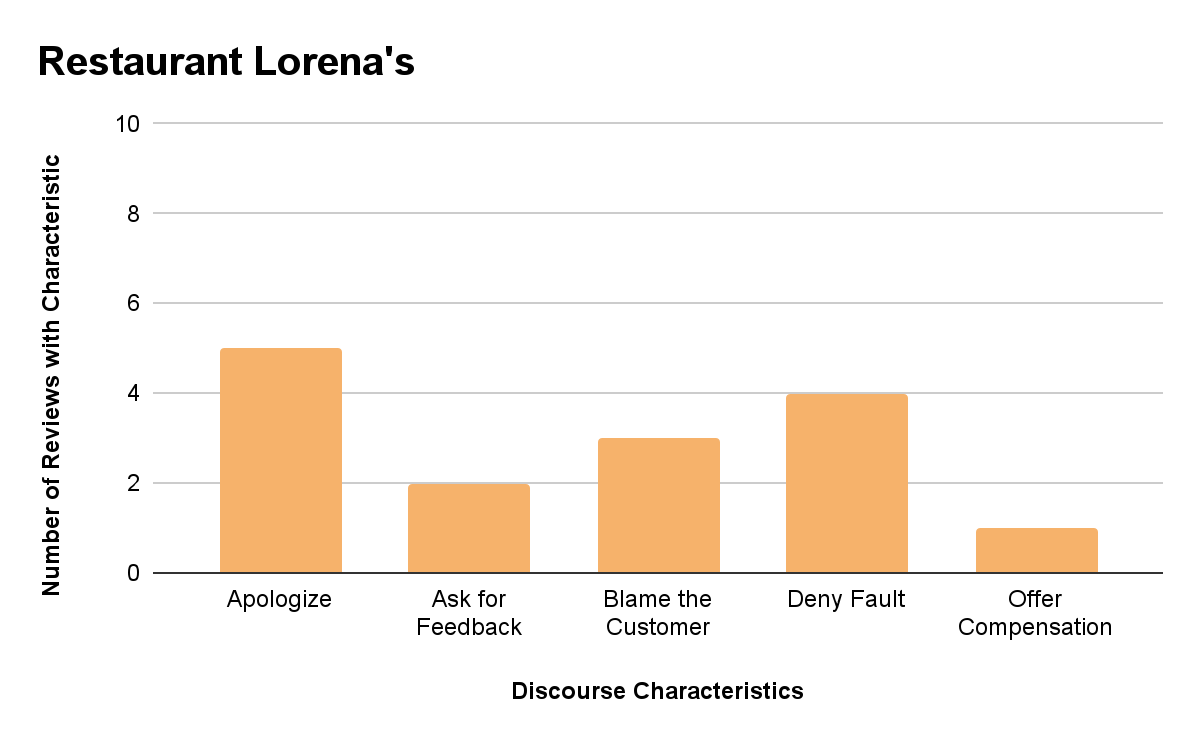Businesses can improve interactions with dissatisfied customers online by accepting blame and taking accountability.
When it comes to judging between good businesses and better businesses, sometimes you need to look beneath their outer veneer of professionalism and see them in action online. If businesses consider more closely how they communicate their accountability online, they can improve their online interactions with their customers.
Customer-business relationships have increasingly moved online in the past decade. Companies use different approaches when it comes to responding to upset customers. Some are always respectful to the customers (even if the customer is to blame for an issue), while others essentially gaslight their customers; they tell the customer that the problem didn’t happen or that the business had nothing to do with it.
Take the Blame
A US government committee described a strategy of the Nazi party in their takeover of Germany: “Never to admit a fault or wrong; never to accept blame.” Something so simple as never admitting fault contributed to the rise of one of the most terrifying political parties in history. The Nazi party is an rather extreme example of this strategy, but there is still something to learn from this idea of accepting blame. Online discourse is becoming increasingly more negative and volatile. We can each contribute to a more positive online environment by admitting to our faults and accepting blame for our mistakes.
To dig deeper into this idea of taking responsibility online, I chose to examine how two expensive restaurants in New York respond to their negative Google reviews.
Accountability in Google Reviews
I decided to select two restaurants in New York because there is a high density of restaurants in that area. I chose locations in the highest dollar range on Google because people have higher expectations when they are paying more for their food. From these results, I chose two restaurants that responded frequently to reviews written by customers and compared and contrasted their discourse through data coding. I selected ten negative reviews that the restaurant responded to from each restaurant.
I looked for five characteristics in their discourse:
- apologizing for the customer’s negative experience
- asking for feedback to solve or prevent the problem in the future (this also includes thanking the customer for the feedback)
- blaming the customer for the problem
- denying that there was a problem or that the company is at fault for it
- offering compensation for a negative experience
Here’s what I found.
Coco Bistro: Apologetic and Accountable

The restaurant Coco Bistro always sincerely apologized for negative customer experiences. They usually thanked the customers for their feedback and invited them to reach out to the company directly on social media to work out their concerns. They would also offer compensation in the form of gift cards.
Several reviews expressed disappointment with the high prices, and Coco Bistro responded. They apologized for the high prices and stated that they would like to make it up to the customer in the form of the gift card, which they could claim by messaging the restaurant on Instagram.
In one instance, a customer had specific complaints about specific dishes. The manager responded personally and asked for the customer to email her individually with more details because she appreciates feedback from customers and wanted to fix the problem for future customers.
Coco Bistro clearly seeks to improve the user experience of every customer.
Restaurant Lorena’s: Accusatory and Defensive

On the other hand, Restaurant Lorena’s apologized, asked for feedback, and offered compensation less often. More often, the restaurant denied responsibility for the problem or blamed the customer.
One customer was upset by a credit card fee, and felt that the front desk had handled the situation unprofessionally. Restaurant Lorena’s responded and said the fee was company policy and that the customer shouldn’t be offended.
Another customer posted a review saying that their child had to go to the emergency room after having an allergic reaction at the restaurant. The restaurant owner merely stated that their kitchen was completely safe for allergens and that the child’s food was safe to eat.
Restaurant Lorena’s always tried to provide justification for a bad customer experience. While they apologized in about half of their interactions, the apology usually came with a “but” or a justification for their behavior. They rarely offered compensation.
Qualitative versus Quantitative Weight
Interestingly, Restaurant Lorena’s has a slightly higher average rating on Google than Coco Bistro by 0.1. Even though their ratings are practically the same overall, Coco Bistro appears to show more professionalism and courtesy in their manner of responding to reviews. The takeaway? Maybe quantitative factors don’t always show the complete picture.
On the outside, two businesses may look the same, but their online discourse can tell us a lot about what goes on underneath. People often don’t like to take the blame for problems, but maybe stepping up to the blame plate rather than turning it back on customers is a solution for some of the divisive behavior that occurs daily on the internet.
This idea of increased accountability has applications outside of the business world. On social media, which political parties admit to mistakes and which blame the opposing party for the problems of the nation? Do scientists admit to unethical behavior? Will influencers apologize for inappropriate remarks? We can each commit to increased accountability in our online dealings and use discretion when following those who turn their guilt onto others. In the comments, please let me know how it goes for you!
-Karlie Kelsch, Netiquette
FEATURE IMAGE BY Tumisu
Step up to the Blame Plate: Improving Online Interactions by Increasing Accountability
Businesses can improve interactions with dissatisfied customers online by accepting blame and taking accountability.
When it comes to judging between good businesses and better businesses, sometimes you need to look beneath their outer veneer of professionalism and see them in action online. If businesses consider more closely how they communicate their accountability online, they can improve their online interactions with their customers.
Customer-business relationships have increasingly moved online in the past decade. Companies use different approaches when it comes to responding to upset customers. Some are always respectful to the customers (even if the customer is to blame for an issue), while others essentially gaslight their customers; they tell the customer that the problem didn’t happen or that the business had nothing to do with it.
Take the Blame
A US government committee described a strategy of the Nazi party in their takeover of Germany: “Never to admit a fault or wrong; never to accept blame.” Something so simple as never admitting fault contributed to the rise of one of the most terrifying political parties in history. The Nazi party is an rather extreme example of this strategy, but there is still something to learn from this idea of accepting blame. Online discourse is becoming increasingly more negative and volatile. We can each contribute to a more positive online environment by admitting to our faults and accepting blame for our mistakes.
To dig deeper into this idea of taking responsibility online, I chose to examine how two expensive restaurants in New York respond to their negative Google reviews.
Accountability in Google Reviews
I decided to select two restaurants in New York because there is a high density of restaurants in that area. I chose locations in the highest dollar range on Google because people have higher expectations when they are paying more for their food. From these results, I chose two restaurants that responded frequently to reviews written by customers and compared and contrasted their discourse through data coding. I selected ten negative reviews that the restaurant responded to from each restaurant.
I looked for five characteristics in their discourse:
Here’s what I found.
Coco Bistro: Apologetic and Accountable
The restaurant Coco Bistro always sincerely apologized for negative customer experiences. They usually thanked the customers for their feedback and invited them to reach out to the company directly on social media to work out their concerns. They would also offer compensation in the form of gift cards.
Several reviews expressed disappointment with the high prices, and Coco Bistro responded. They apologized for the high prices and stated that they would like to make it up to the customer in the form of the gift card, which they could claim by messaging the restaurant on Instagram.
In one instance, a customer had specific complaints about specific dishes. The manager responded personally and asked for the customer to email her individually with more details because she appreciates feedback from customers and wanted to fix the problem for future customers.
Coco Bistro clearly seeks to improve the user experience of every customer.
Restaurant Lorena’s: Accusatory and Defensive
On the other hand, Restaurant Lorena’s apologized, asked for feedback, and offered compensation less often. More often, the restaurant denied responsibility for the problem or blamed the customer.
One customer was upset by a credit card fee, and felt that the front desk had handled the situation unprofessionally. Restaurant Lorena’s responded and said the fee was company policy and that the customer shouldn’t be offended.
Another customer posted a review saying that their child had to go to the emergency room after having an allergic reaction at the restaurant. The restaurant owner merely stated that their kitchen was completely safe for allergens and that the child’s food was safe to eat.
Restaurant Lorena’s always tried to provide justification for a bad customer experience. While they apologized in about half of their interactions, the apology usually came with a “but” or a justification for their behavior. They rarely offered compensation.
Qualitative versus Quantitative Weight
Interestingly, Restaurant Lorena’s has a slightly higher average rating on Google than Coco Bistro by 0.1. Even though their ratings are practically the same overall, Coco Bistro appears to show more professionalism and courtesy in their manner of responding to reviews. The takeaway? Maybe quantitative factors don’t always show the complete picture.
On the outside, two businesses may look the same, but their online discourse can tell us a lot about what goes on underneath. People often don’t like to take the blame for problems, but maybe stepping up to the blame plate rather than turning it back on customers is a solution for some of the divisive behavior that occurs daily on the internet.
This idea of increased accountability has applications outside of the business world. On social media, which political parties admit to mistakes and which blame the opposing party for the problems of the nation? Do scientists admit to unethical behavior? Will influencers apologize for inappropriate remarks? We can each commit to increased accountability in our online dealings and use discretion when following those who turn their guilt onto others. In the comments, please let me know how it goes for you!
-Karlie Kelsch, Netiquette
FEATURE IMAGE BY Tumisu
Related Posts
Handling Complaints: How Formal Should You Be?
How Face-Saving Politeness Strategies Can Improve Online Relationships
Unboxing YouTube Apologies: What Language Reveals about Sincerity